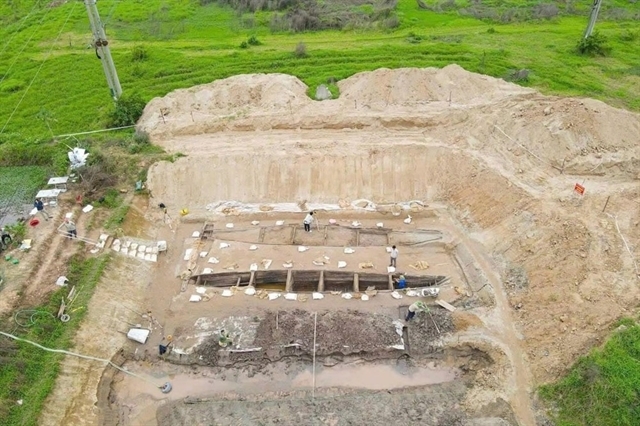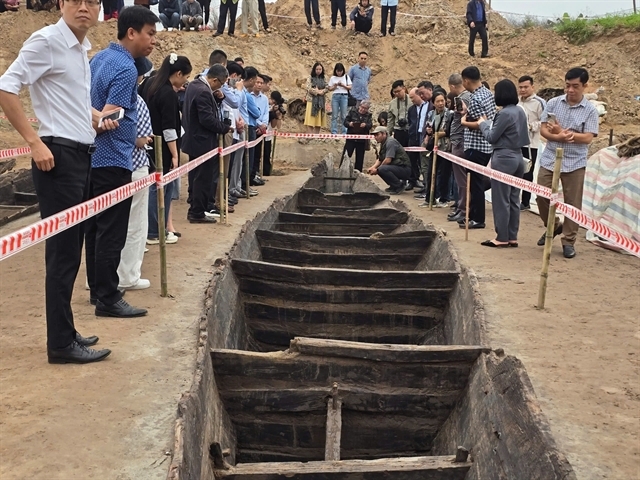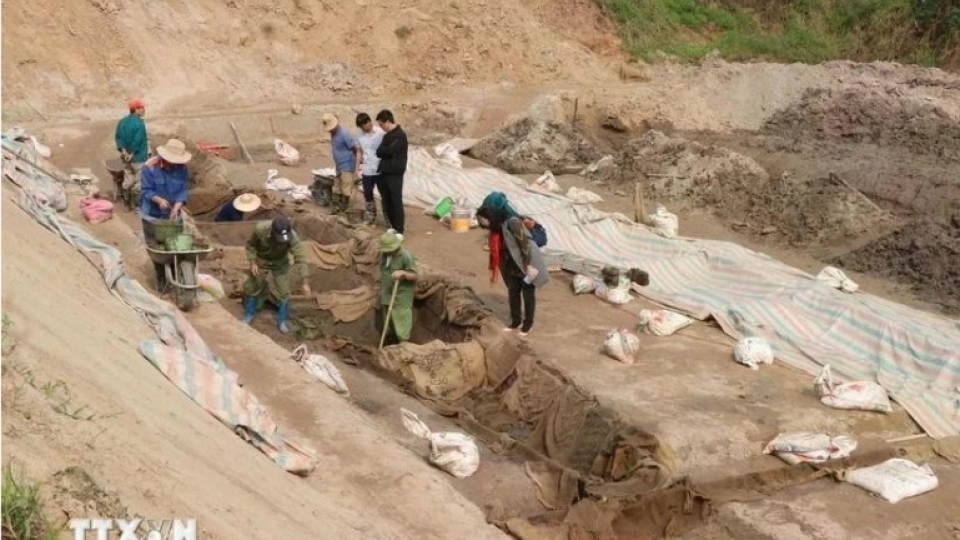Bac Ninh ancient boats date back about 1,800-1,600 years
Latest archaeological research has revealed the ancient double-hulled boat (catamaran) unearthed recently in the northern province of Bac Ninh, dates back about 1,800-1,600 years ago, leading to a technical legacy of the Dong Son people.

The converging evidence, including the structure, accompanying relics and the results of radiometric dating, shows that this is not only a remarkable discovery but also an essential piece of the history of ancient Vietnamese technology.
Experts have said it is worthy of preservation according to national and international standards, thus the previous assumptions about the boats dating back to the Ly - Tran dynasties have been overturned.
“Right from the workshop held at the end of March 2025, I said this is a typical Dong Son technique,” said Dr Nguyen Viet, Director of the Southeast Asian Prehistoric Research Centre.
Dr Viet told Bao Van Hoa (Culture Newspaper) that this was a traditional technique "among the world's top" at that time, especially because it did not depend on metal but took advantage of wooden mortise and tenon joints for connection.
According to the expert, clear traces of mortise and tenon dowels on the boats' wooden bodies allow for the restoration process.
Regarding the debate in determining the initial age, Viet noted that errors might arise due to not completely separating organic impurities in the C14 sample, leading to a tendency to 'rejuvenate' the results.
However, even in the '1,600-1,800 year range', the artefacts are still stable, belonging to the 'late Dong Son or early AD frame'.
"The technique is the hard evidence, and C14 is only a support," Viet said.
Unique floating structure
Unlike the normal dugouts, the twin-hulled boats in Bac Ninh suggest a unique floating structure with a floor. The two dugouts join in parallel, connected by a mortise-and-tenon crossbar. There are holes for sticking poles on the top and middle of the hull, capable of supporting a light roof or a small architectural space.
Notably, the two ends are symmetrical instead of distinguishing the bow and rudder, reinforcing the hypothesis that it is a floating platform rather than a moving boat.
“I do not call the artifacts in Bac Ninh a 'boat'. I think this is a floating structure, possibly used for rituals, worship, or community activities on the water,” Dr Viet said.
“Through the ancient dugout canoes I have studied, I can confirm that ancient Vietnamese people were clearly aware of aerodynamics in carving the head and tail of the boat. The artifacts in Bac Ninh have the same heads and tail.
"The traces of the boat’s head braces are still quite clear, allowing us to estimate that there were about eight horizontal bars, 1.2 - 1.5m apart, supporting a flat floor above.”

In regional context, the “double-hulled boat” structure is not common to mention in Southeast Asian documents, making the artifacts in Bac Ninh even more rare and precious, according to the expert.
“This is proof that the Dong Son people understood wood, water and structure. They solved the problem of stability on the water surface by doubling the dugout and building a functional floor above,” said Viet.
From a historical and technical perspective, the ancient boats in Bac Ninh place the Dong Son culture in a 'global dialogue'.
Appearing at the same time of boats built during the Roman period with mortise and tenon, but the Dong Son solution was early and adapted to the locality. The builders uses entirely organic materials such made of wood such as bolts and pegs while still achieving durability. This showed their thinking of connecting wood was very developed.
Conservation needs international perspective
Dr Viet added: "The two ancient boats do not only belong to Bac Ninh. They are the properties of the country, even of humanity. The perspective on conservation must go beyond administrative boundaries.”
From his field experience in conservation of ancient boats of Tran Dynasty in Quang Ngai Province, he proposed two scenarios of in-situ and in-laboratory conservation.
Dr Viet sent a message that science needs a "spirit of comparison and an open vision".
“Dong Son boat building techniques have shown the material intelligence and structural thinking of ancient Vietnamese people," he said.
"The artefacts discovered in Bac Ninh not only supplement chronological data, but more importantly, they require to be preserved properly.”



